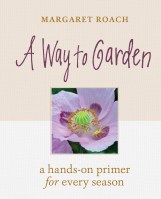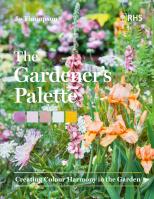Shade Gardening with Jenny Rose Carey

Jenny Rose Carey is a renowned gardener, educator, historian, and author, and the former senior director at the Pennsylvania Horticultural Society’s Meadowbrook Farm in Jenkintown. She previously worked at Temple University for over a decade, first as an adjunct professor in the Department of Landscape Architecture and Horticulture and then as director of the Ambler Arboretum.
She is an avid hands-on gardener who has gardened in both England and the United States. Her Victorian property, Northview, contains diverse garden spaces, including a cutting garden, an herb garden, a dry garden, and various mixed flower bed.
Shade Gardening Frequently Asked Questions
I often get asked for my insights about shade gardening. I have always loved shady gardens. This attitude matches the positive title of my book, Glorious Shade. Delightful shade gardens are peaceful, soothing, and contemplative spaces.
Throughout the book, you will see that my approach is constructive and practical with ideas to help you make your own shade garden. Just a sitting in a seat under a tree, surrounded by a few shade plants, can lower your heart rate and induce a feeling of calm. The birds and other wildlife will love your tree too.

How do you pick shade plants?
There are many pretty understory shade plants that originate from all around the world. They are found naturally in woods, forests, and jungles, and so, are well-adapted to growing in the low-light conditions. These plants are the ones to choose for your shade garden. They often have large leaves to collect as much sunlight as possible for growth. They may have long root systems to allow them to get sufficient moisture from soil that may be dry around tree roots.

If possible, include some plants that are native to your geographical area. If you have native trees growing above your garden, the understory lifecycles will match those of the native trees above them. For example, if you have a native oak tree find out what plants would naturally grow beneath them and try some of those plants.
Many North American native plants bloom and grow early in the year before the dense tree canopy fills in above them. The low-growing plants make the most of the early spring sunshine to bloom, set seed, and then may go dormant for the rest of the year. Add other plants that will fill the space later like reliable ferns.
How to plan a shade garden?
The ideal amount of sunlight is what is called part shade, where the plants receive two to six hours of sunlight a day in the summer. To find a great spot with part shade, bring the planting area away from the tree trunk.
Look for an area where there is a light tree canopy, and the sky is visible at certain times of the day. Stay away from areas of heavy shade under evergreen trees or shrubs. Also avoid dry areas, such as overhanging house roofs, that block rainfall and provides solid shade. Instead, look for an area of dappled shade near to, but not dominated by, a deciduous tree or large shrub.

Can you garden around tree roots?
If you are planting into an area where there are existing tree roots, buy small plants. They have little root balls that can be inserted in small planting pockets. Trace the roots away from the tree trunk and look for spaces between the big roots.
It doesn’t matter what shape holes you manage to dig, because you are going to squish the roots into the hole. Take the small new plants and remove as much of the potting soil as you can from their root balls. Insert them into the holes and add a mixture of your natural soil and some leaf mold and firm it into place. Water the new plants regularly while they get settled in and get their roots down. Once plants get their roots down, they will spread out in all directions including towards the tree.
If you think that there are too many roots in the ground, try using large containers for your shade plants. They will need watering regularly, but they are a great place for hardy plants such as hostas, ferns, or tropical plants that come from shady jungles.

How do you grow healthy plants in the shade?
Wherever you garden in shade, one of the keys to success is to make sure that your shade garden soil is full of organic matter. All shade plants live in environments where there is plenty of leaf litter in the soil. Leaves and twigs fall on them and slowly decay in place. In contemporary gardens, the urge to ‘clean up’ our planting beds and remove fallen leaves leads to soil that lacks organic matter.
If you do one nice thing for your shade plants, it is to add lots of compost or decomposed leaf mold to the soil. The other approach is to leave the leaves where they fall on the beds. If the leaves are too numerous or too large, then remove some and shred them with your lawn mower on your lawn and put them back on the beds. Your plants will thank you by growing more lushly.
Read the Book!
“Great plant lists and design tips—Glorious Shade is full of helpful advice from a true gardener.” —David Culp, author of The Layered Garden
“A practical guide to maintaining a shade garden with a useful calendar of seasonal tasks, plant directory and inspiring design ideas.” —Gardens Illustrated
Shade is one of the most common garden concerns homeowner’s have, but with the right plant knowledge, you can learn to embrace shade as an opportunity instead of an obstacle. In Glorious Shade, Jenny Rose Carey celebrates the benefits of shade and shows you how to make the most of it. This information-rich, hardworking guide is packed with everything you need to successfully garden in the shadiest corners of a yard. You'll learn how to determine what type of shade you have and how to choose the right plants for the space. The book also shares design and maintenance tips that are key to growing a successful shade garden. Stunning color photographs offer design inspiration and reveal the beauty of shade-loving plants.




